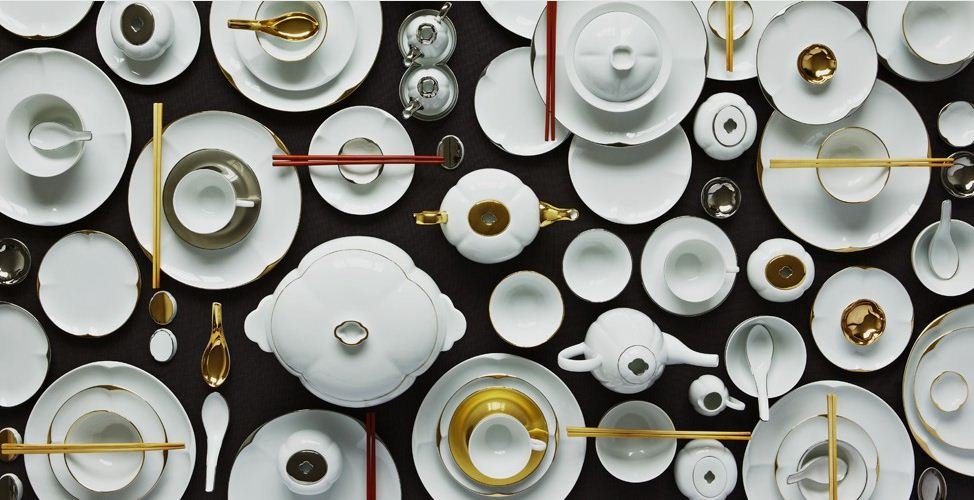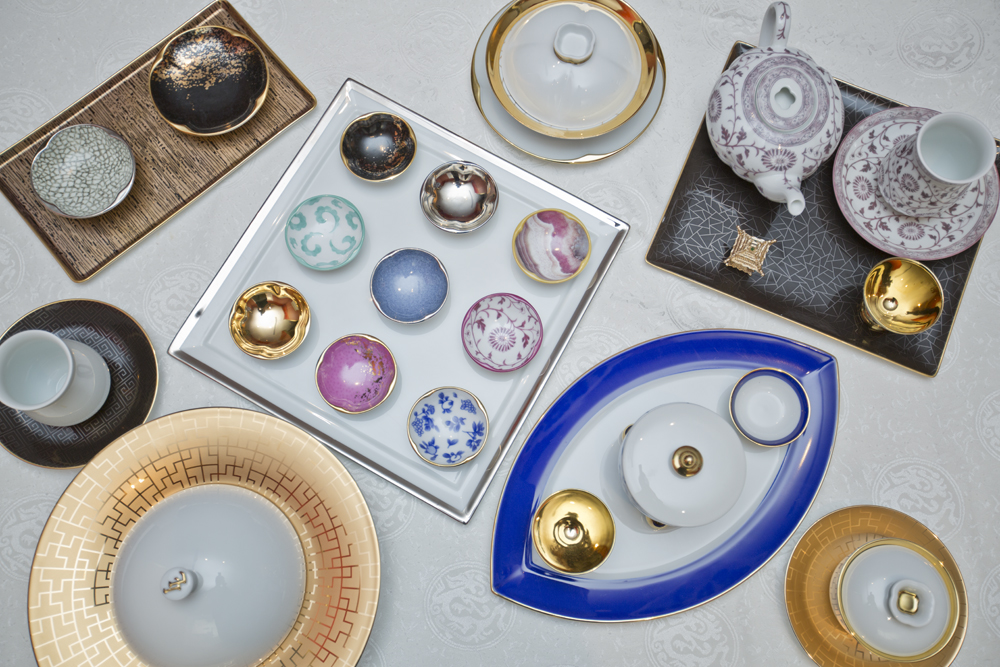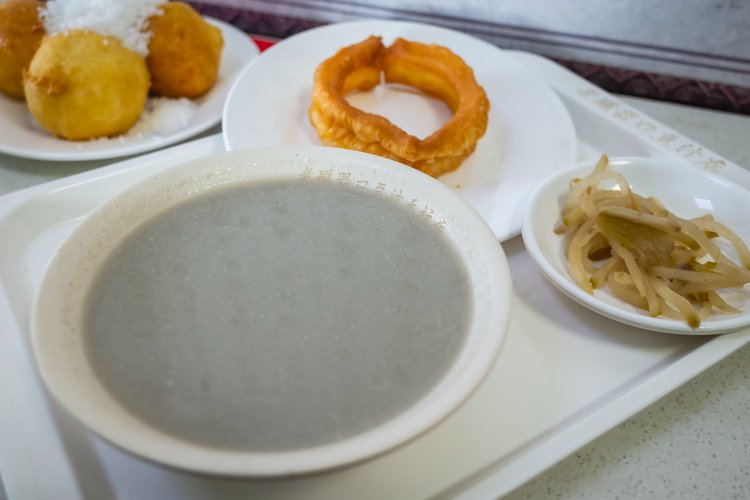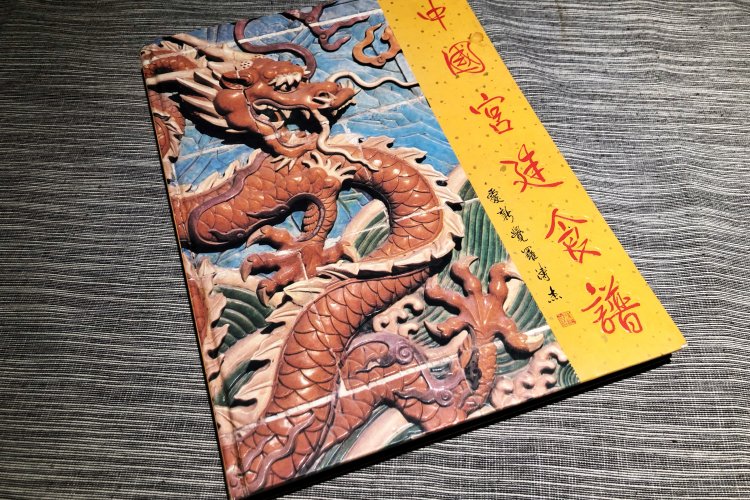Imperial Epicureans: The Waldorf Astoria and LEGLE FRANCE Present RUYI Gastronomy

This post is sponsored by the Waldorf Astoria Beijing
Delicate texturing. Expert preparation. Centuries of tradition. These words not only describe the gourmet dishes that Desmond Chang has envisioned for his “RUYI Gastronomy,” but also the artisan porcelain that those exquisite ingredients are served on. The Managing Director of the esteemed French porcelain brand LEGLE FRANCE and aficionado of traditional Chinese cuisine is working with the Waldorf Astoria to create a uniquely Beijing-centric fine dining experience with this new gastronomy, which is being held at the hotel's Zijin Mansion and its Ming Dynasty-themed Hutong Villa from now until December 31.
Chang carried out careful research and collaborated closely with Waldorf Chef Menex Cheung to not only recreate, but also elevate, the Capital’s traditional dishes for the fifth installment of LEGLE FRANCE’s RUYI Gastronomy series (which has also explored regional cuisines in Shanghai and Hong Kong, with a sixth installment slated to take place in Taiwan this year). The gastronomy’s meticulously prepared dishes complement the equally exquisite tableware, which were created by esteemed ceramics designer Peter Ting.
The entire RUYI project began with a simple conversation between Ting and Chang three and a half years ago in Paris. While dining at a Chinese restaurant, Chang turned to Ting and asked: “‘What happened? We love the food, but what happened to Chinese tableware? None of it is designed by the Chinese, it’s not for Chinese cuisine – how can a foreigner tell you how a Chinese bowl should fit in your hand, or the dimensions of a spoon for one of our dishes?”

The conversation prompted Chang to commission Ting to design contemporary porcelain for modern Chinese fine dining, as a way to revive the art form that originated in the Middle Kingdom, only to be lost during the turmoil of the Cultural Revolution. While conducting research for the project, Chang was astounded to learn that Europeans had deemed fine Chinese porcelain to be “White Gold,” during some of their Far East encounters in the early 1700’s. By the turn of that century, French designers had learned to mimic the smoothly contoured, pearl colored ceramics of China’s Qing dynasty, and have continued that tradition to this day, despite it being abandoned by its nation of origin. Chang explains: “So today, the most authentic porcelain in terms of color, shape, substrate, and gloss, is from France. It’s not from China anymore. It’s ridiculous, but it’s a sad, hard fact.”
The LEGLE FRANCE Managing Director insists that it’s high time China reasserted itself as the leader of this art-form. Since launching the RUYI Gastronomy events, some of his guests have compared Ting’s tableware to Japanese porcelain, prompting Chang to exasperatedly exclaim: “Japanese porcelain looks like this because it was passed from the (Chinese) Tang dynasty to the Japanese in 900AD. The clashing colors between the tableware and the food, that is a very Chinese tradition.”
With that sentiment in mind, Ting worked to give China’s neglected ceramic legacy its proper due. The RUYI Gastronomy’s dim sum dishes, for instance, are served on porcelain plates divided into square and round sections that each represent a different Chinese dynasty – from the blue flower motifs on one that are emblematic of the Qing dynasty, to the black and pink shades on another that evoke the lacquer luxury goods that China sold to the West in the Tang dynasty. As Chang describes it: “This is meant to be 1,000 years of Chinese history on one plate.”
Ting agrees that his porcelain table wear is a tribute to early Chinese innovations, buy adds that the Far East was not his sole muse. “It was inspired by lots of things,” he says, before listing those influences off: “Church windows in medieval France, lucky Irish four leaf clovers, and Chinese motifs in Suzhou Gardens. The collection has Chinese Gaiwan tea cups, and the complete set can look at home on a Chinese table as much as a classic British afternoon tea table.
In that sense, Ting is not only ushering in a Chinese porcelain revival, but also drawing on some of the foreign innovations in the medium. It is not a mere reclamation of a long lost Chinese tradition, but a compelling narrative that refuses to shy away from the Western porcelain makers who overtook their Middle Kingdom counterparts as of late. Or, as Ting puts it: “It is about looking at the similarities between East and West, rather than the differences.”
Chang says his appreciation of Ting’s work has only grown since they first embarked on their RUYI odyssey. “When we first launched in 2012, I thought it was beautiful. Now, I think it is timeless. I’m responsible for putting the decorations and substrates on the tableware for the gastronomy, and the more I do that, the more I realize that Peter gave me the perfect canvass. I can do all kinds of juxtapositions with the tableware and the food. It is an amazing thing that he has given us.”
The LEGLE FRANCE Managing Director knew that Ting would be the perfect fit for the project because of his unparalleled standing in France’s world renowned porcelain scene. A recent in depth profile about the porcelain artisan in Elle magazine acclaims the mixture of European and Chinese influences in his ivory pale, glossy works. The author goes on to describe some of the biggest fans of Ting’s work, including none other than the Queen of England, who “once gifted… a specially made set" of his porcelain to a visiting dignitary.

“I was working at Thomas Goode, who held three Royal Warrants at the time,” Ting recalls of the Royal praise bestowed on his work. “The request from the Queen came in, via Lord Chamberlain's office, for a gift to the President of Brazil for his official state visit. It is amazing to receive such an order, and of course it is an honor. I remember checking and re-checking the final products to make sure that they were flawless, before sending them off to Lord Chamberlain’s Office at Buckingham Palace.”
And while Ting was humbled by that prestigious Royal order, he adds that he has been equally honored to partner with Chang, saying: “LEGLE FRANCE is a brand that I have admired for a long time, so when the opportunity came up for me to work with them I jumped at it. The icing on the cake was of course working with Desmond, who has such amazing knowledge. It’s not just knowledge, but in depth understanding, so working with him is like having a master class every time.”
Ting and Chang are not only bound by their passion for porcelain, but also by their shared upbringing around such finely crafted, pure white works. The Elle article described Ting’s childhood in Hong Kong, where he “fell in love with the porcelain ornaments he saw in a relative’s ‘hundred-treasure case.’”
Chang’s family not only collected such wares, but also sold them. Like Ting, Chang’s parents hailed from Hong Kong and founded a typical SME (small medium enterprise) that bought porcelain from the Mainland and exported it around the world.
Before long, the Changs’ family business began to mirror the history of its wares. Desmond Chang recalls: “After a decade or so we saw that the model we had wasn’t working in the long term, so we started buying factories in Europe, not Asia. We put our money in small factories in Europe, and we incubated the brands that way.”
That European excursion brought Chang to France, and eventually lead to his successes and LEGLE. After all that time away, bringing the RUYI porcelain table ware to Chinese gastronomy marks not only a cultural return to form, but also a personal triumph.
He explains: “All families from Hong Kong have a history of less than 60 years. Our forefathers were practically refugees when they fled to Hong Kong. So there’s nothing historically lavish, nothing to rave about in our culture. I can’t even find my ancestors, although I believe they were from Hubei province. We were cut off, but that doesn’t stop us from digging back into the 2,000 years of Chinese history, to find our media, our substrate: porcelain … We want to bring about a renaissance of Chinese culture, and if everyone digs back into the roots of Chinese culture, I think this will be a much more beautiful country than what it is today.”
The Waldorf Astoria Beijing and LEGLE FRANCE's Beijing RUYI Gastronomy event runs from now until December 31, 2015 in the historic Ming Dynasty-style Hutong Villa. Guests will enjoy an elaborate nine-course meal inspired by the cuisine of Imperial Beijing paired with a selection of Chinese spirits, wines and teas, all served on fine RUYI tableware.
RUYI Set Menu I: RMB 1,688 + 15 percent service charge per guest
RUYI Set Menu II: RMB 1,088 + 15 percent service charge per guest
For reservations and more information please call 8520 8916.
Photos: Uni You, courtesy of LEGLE FRANCE




